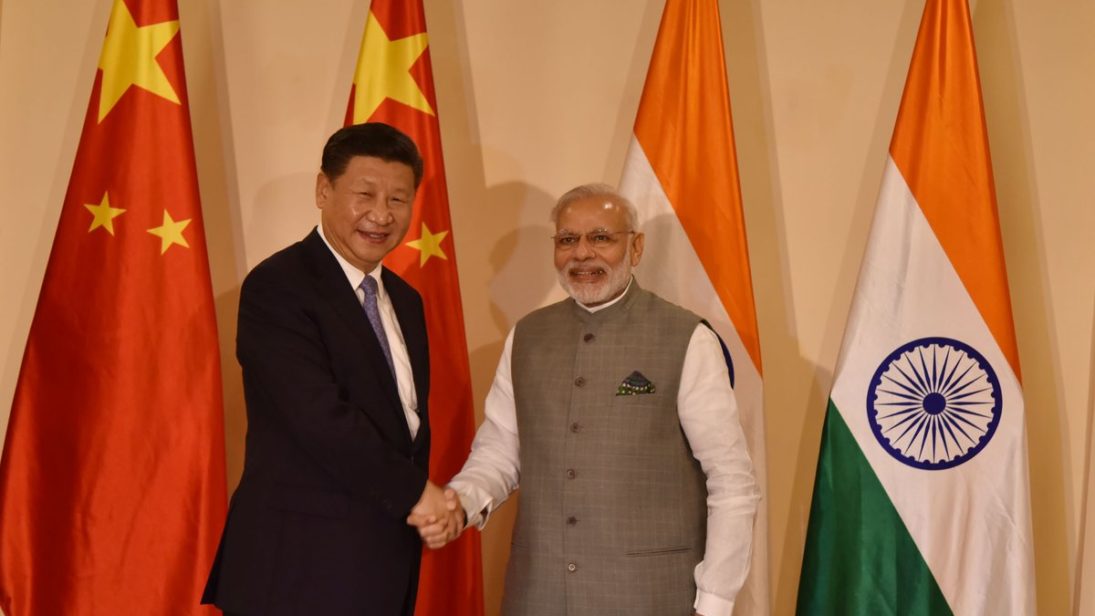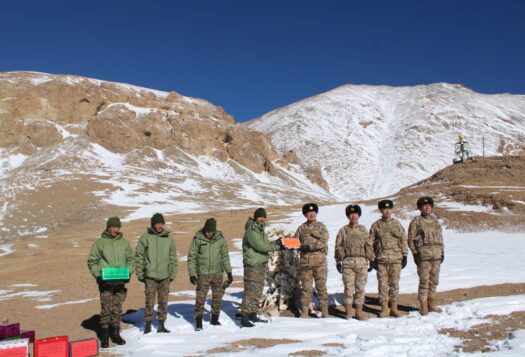
Asia’s economic giants and regional competitors China and India, otherwise known for their adversarial relationship, have been trying to project a new momentum of cooperative behavior recently. During an informal summit in Wuhan in April this year, Chinese President Xi Jinping and Indian Prime Minister Narendra Modi agreed to implement a joint economic project in Afghanistan. And last month, India and China jointly launched a training program for Afghan diplomats in New Delhi. The idea of joint India-China projects in Afghanistan is not entirely new but such initiatives have never been implemented earlier. Thus, this recent move suggests renewed willingness on the part of New Delhi and Beijing to work with each other. But the question is: can Afghanistan become a theater of cooperation for these countries, which have an unresolved border dispute and an increasing sense of competition, especially in the maritime domain?
India and neighboring Afghanistan have historically shared close cultural and political ties, having coordinated during their independence movement from the British. Though relations suffered during Taliban control of Afghanistan in the 1990s with India supporting the opposing Northern Alliance, New Delhi rejuvenated ties with Kabul in 2001, primarily focusing on civilian development assistance and reconstruction, with a view to re-establishing Indian influence in Afghanistan and ensuring stability in the country by supporting economic development. A number of infrastructure ventures have been carried out in Afghanistan through Indian aid, such as the construction of the Salma Dam, the Afghan Parliament building, the Zaranj-Delaram road connecting Iran to Afghanistan, the transmission line from Pule-Khumri to Kabul, and the substation at Chimtala. Moreover, despite Pakistan’s obstruction, India-Afghanistan relations have been augmented through the India-Afghanistan air corridor and the trilateral agreement with Iran over the Chabahar port. In fact, the first trilateral meeting of the Coordination Council of the Chabahar Agreement took place recently and India, Iran, and Afghanistan discussed how they could fully operationalize the project, which would allow Afghanistan easy access to Indian and Iranian markets and further its economic growth.
India and China are two of the largest economies in the world that have an interest in seeing an Afghanistan that does not become the den of violent extremists and terrorist organizations, detrimental to economic and developmental progress in the region.
In contrast to Indian developmental efforts in Afghanistan that are primarily focused on helping the country rebuild such that it does not compromise regional security, China’s approach is aimed at utilizing Afghanistan to further its own regional economic expansion. Though China’s involvement in Afghanistan has been more recent compared to India, it has rapidly developed a strong presence in the country. In 2006, Beijing signed the Treaty of Friendship, Cooperation, and Good Neighborly Relations with Kabul. Two years later, Chinese companies won a USD$3 billion contract for extracting copper from the Mes Aynak mines in Logar province. Afghanistan is a key node in Beijing’s Belt and Road Initiative (BRI), which aims to build a string of highways and railways across the region and beyond. In fact, the success of one of the flagship projects of the BRI, the China-Pakistan Economic Corridor, depends on a stable neighborhood, which is dictated by the security situation in Afghanistan. Beijing’s economic ambitions could be derailed by an unstable Afghanistan, which border’s China’s western province Xinjiang. Therefore, China has stepped up its involvement in ensuring Afghan stability in recent years, which can be seen through China’s role as a peace broker, aid donor, and investor in the country.
Shared interests give rise to avenues for cooperation. India and China are two of the largest economies in the world that have an interest in seeing an Afghanistan that does not become the den of violent extremists and terrorist organizations, detrimental to economic and developmental progress in the region. Moreover, China’s BRI will include a cross-border logistics framework connecting China’s western provinces with asset-rich Central Asia and, in the long run, the business sectors of Europe. Meanwhile, India’s “Connect Central Asia” policy envisages Afghanistan as a regional trade center criss-crossed by energy pipelines and air, rail, and road links that will transport the assets of Central Asia to the subcontinent in future. Thus, a stable Afghanistan is in the strategic interests of both India and China.
Strategic divergences and the default dynamics of competition between India and China could constrain any substantial convergence over economic cooperation in a third country like Afghanistan.
Besides training ten Afghan diplomats in New Delhi last month, the second leg of which is ongoing in Beijing, India and China are also exploring other areas of cooperation in Afghanistan—such as potentially combining India’s expertise in agriculture and medical services with China’s success in hybrid rice production and poverty reduction. Additionally, the evolving nature of the Afghan war lends a sense of uncertainty regarding the continued presence of American troops in the country and in case of a U.S. withdrawal, the role of the two Asian powers—India and China—becomes even more crucial in cooperating towards finding a common ground in Afghanistan. After the 2017 Doklam military standoff, both New Delhi and Beijing have expressed their desire to stabilize their strained relationship and working together in Afghanistan may be a mechanism to achieve that.
The initial signals from both India and China show their intent to explore areas of cooperation in Afghanistan. However, whether these nascent diplomatic steps will lead to long-term and large-scale projects depends on a host of factors. For instance, the deteriorating security situation in Afghanistan will be an immense challenge to any substantial joint ventures like connectivity. In addition, news reports have already emerged contending that in order to assuage its South Asian ally Pakistan’s fears of Indian influence in Afghanistan, Beijing has convinced New Delhi to go for smaller-scale projects, such as the one to train Afghan diplomats, as opposed to new infrastructure or energy projects. If this is a sign of things to come, strategic divergences and the default dynamics of competition between India and China could constrain any substantial convergence over economic cooperation in a third country like Afghanistan. While this new model could be a harbinger of interest-based cooperation between India and China, both New Delhi and Beijing need to watch out for the larger strategic competition, if not confrontation, in their relationship denting specific understandings on tactical engagement.
***
Image: Narendra Modi via Flickr


